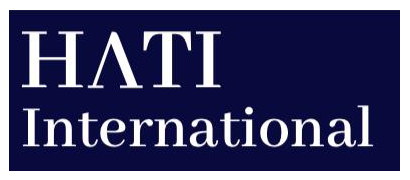Why Hospitals Must Focus on EHR Scalability
EHRs (Electronic Health Records) is one of the fundamental steppingstones to transformative healthcare.
In 2016, an analysis stated that EHR adoption is “nearly universal” among acute care hospitals, as 96% of facilities live on the technology. In another separate study, almost 99% of hospitals had implemented an EHR system in 2016. This figure was an increase from 33.6 percent in 2003.
In fact, in the US, the EHR adoption increased exponentially after the enactment of the Health Information Technology for Economic and Clinical Health (HITECH) Act of 2009.
That said, EHR technology has penetrated several hospitals and patient-care facilities. It helps healthcare providers offer better manage patient care and enhanced facilities because of the following benefits:
- Up-to-date and accurate information about patients anytime, anywhere
- Increased privacy of patient data
- Decreased paperwork and reduction in duplication
- Instant and easy access to all the patient records for efficient care
- Better coordination between teams in the healthcare facilities
- Reduced medical errors and improved quality of services
All in all, this wide range of advantages to the healthcare facilities and patients leads to better employee productivity and higher patient satisfaction.
Here are the pointers that explain why EHR scalability needs to be the focus for hospitals:
The Shift Towards ‘Smart’
There has been a shift from traditional to smart hospitals, which are all about clinical outcome excellence as well as delivering the best possible patient experiences using the latest technologies. Smart hospitals also aim at increasing operational workflow efficiencies. Think of connected healthcare facilities, IoT, and wearable devices. The data generated in a smart environment has to be collected and analyzed in real-time to deliver the desired outcomes. Simply put, imagine scenarios where healthcare professionals don’t need to be on repetitive tasks, there is better communication between teams, physicians get real-time access to patient information, there’s better regulatory compliance, and so on.
That said, with healthcare becoming more of a service, the investment in scalable EHRs becomes pivotal as they make it easier to handle the substantial influx of data and storage, take on interoperability, etc.
Demonstrable High-Quality Care
Hospitals are fast becoming the center of high-quality patient care, with patients expecting stellar experience and high-quality care from the word go. EHRs lead to improved customer satisfaction by offering instant record access, reduced turn-around time, quick allotment of services, fewer visits, and improved delivery of equipment, etc. All this is possible due to complete and accurate information, which can help diagnose and prevent medical errors. The result includes enhanced quality of services in the healthcare facility. As EHRs become mainstream and more and more data gets generated in hospitals, the scalability of EHRs is going to be a priority for hospital CIOs.
Integrated Patient Care
With the right EHR system, healthcare facilities can offer better integrated patient care, which is an amalgamation of primary care, behavioral health, and other patient needs. While it is known that it helps offer a seamless patient/provider experience, some EHRs, at present, are not up to date for managing all the aspects of integrated care. In the near future, hospitals are going to get more dynamic, and without a scalable EHR, it will be difficult to manage all the aspects of integrated care.
Healthcare Consumerism
Patients are new customers. Ergo, now healthcare has become more like other industries, and providers are using healthcare consumerism to appease them. The key to gain an edge over competitors in the age of healthcare consumerism is to start using data, derive insights from the data, and offer better care without increasing costs. Or offer them more value for the services along with consistent experience.
The bottleneck here is the patient data that still exists in silos. This is where healthcare organizations need to be prepared for the consumerist-future with flexible and scalable systems, including EHRs.
Demand for Low Cost of Care
Nowadays, several organizations are coming up with strategies to tackle rising healthcare costs in 2020. They aim to do this through price transparency along with consumer-focused initiatives. Healthcare providers are tweaking their workflows using certified EHR technology. This, in turn, can help them align all their goals and streamline the processes, resulting in faster and improved clinical outcomes.
All in all, EHRs help them use data and analytics to their advantage. This addresses a major concern, which is – to enhance the accessibility and affordability of healthcare. For instance, there is always going to be a need for proactive patient reminders, population management, and management of payments. Also, healthcare facilities need to speed up patient filing and manual processes. This leads to more accurate billings, better processing time and so on. EHRs, very soon, will need to be able to handle this increased load.
New Form of Care Needs
According to this report that studies the global telehealth market over the forecast period of 2015 to 2020, the market is
estimated to grow at a CAGR of 24.2% from $2.2 Billion in 2015 to $6.5 Billion by 2020.
With remote monitoring technologies becoming more commonplace, the pressure to cut down healthcare costs is going to be the order of the day. Remote monitoring is facilitated by Bluetooth-enabled devices, patient-generated health data, and various FDA-approved mobile apps. All these allow better health care, preventative measures, and instant services at a lower cost. Moreover, these remote patient monitoring procedures require EHRs, which can offer complete and detailed health information of the patient irrespective of the remote monitoring devices or patients’/physicians’ location. They easily pass on the information about the patient’s condition, gather the relevant information, monitor the clinical signs of the patient remotely, and so on.
Time to Embrace the Change with EHR Scalability
It is evident from the points mentioned above that the environment of healthcare organizations is ever-changing, maybe due to new compliance and regulatory enforcements or the introduction of new technologies. It is a given that the industry is going to remain dynamic. For this reason, hospitals need to focus on EHR scalability above anything else and keep their pace even during different fluctuations and gain an unforeseen, competitive advantage.




